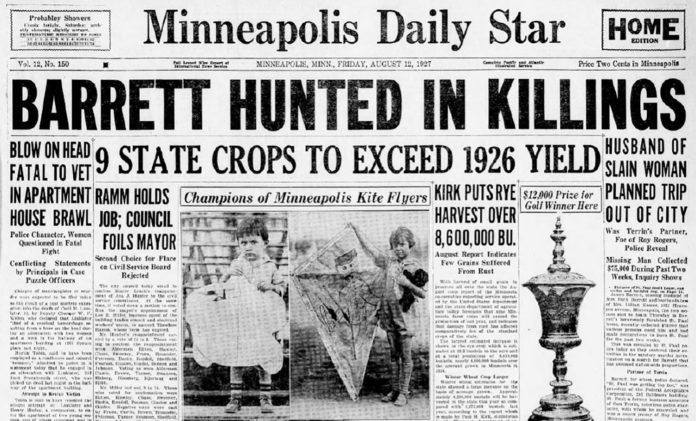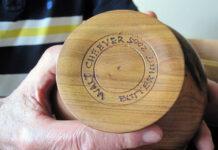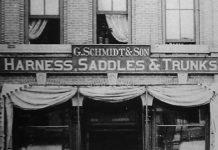Prohibition in Minnesota was generally supported when it began in 1920 and for more than a decade (1920-1933), it made the manufacture, transportation, and sale of alcohol illegal across the country. Prohibition was expected to reduce crime, improve health, and raise morality. As events would soon prove, it did none of those things.
Moonshiners and bootleggers quickly became active to meet the demand for alcohol. Conflicts among illegal suppliers and law enforcement were often violent and sometimes deadly.
St. Paul – Sanctuary for criminals
During this time, St. Paul earned a reputation as a “sanctuary for criminals”— a place for gangsters, bank robbers and bootleggers from all over the Midwest to run their operations or hide from the FBI. This was done with the help of corrupt politicians and police chiefs who agreed to turn a blind eye to gangsters’ underground activity.
Knowing they were generally safe in St. Paul, notorious criminals—including bank robber John Dillinger, racketeer and mob leader Al “Scarface” Capone, Ma Barker and the Karpis-Barker gang, and the outlawed duo Clyde Barrow and Bonnie Parker—stayed in the city at some point.
Mankato had its share of crime due to prohibition. In a MankatoLIFE article written about the Saulpaugh Hotel, Lowell Johnson recalled; “I remember stories of an old criminal who lived at the hotel when I was young, his name was Jack Kooser. I think he might have got shot over in Wisconsin. He used to sit in the lobby chair positioned so he could see the front door and the side door.”
Who was Jack Kooser?
John “Jack” Darwin Kooser was born in 1894, the son of Frank and Fanny Kooser. He and his brother were raised on a farm near Milford, Iowa. When he was 18 years old, he married Ethel Carr (age 17) at Ames, Iowa. They had two sons before they divorced in 1918.
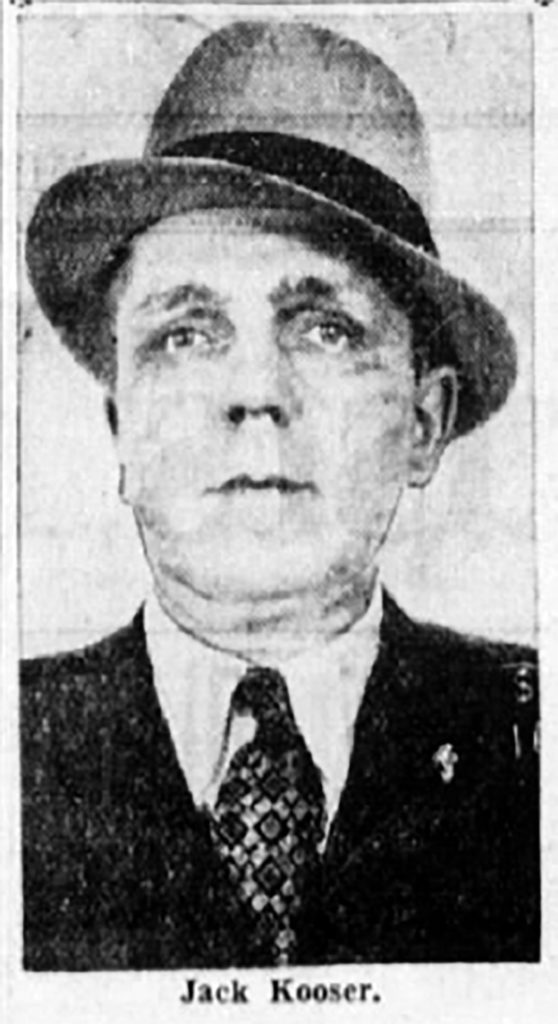
Kooser came to Mankato in 1919 and operated a rendering works before he became associated with gamblers and bootleggers. He had a long criminal record in southern Minnesota. In 1921 he was tried and acquitted for a Lake Wilson bank robbery. During his testimony he told the jury that he made his money bootlegging. He was arrested in Mankato several times in connection with bootlegging activities but each time avoided conviction.
Robbery
On the afternoon of December 20, 1923, a car with three men arrived in the village of Hadley, MN. The green Overland with part of its windshield painted black drove up and down the street until the men saw the Hadley State Bank was empty. Two unmasked men entered the bank and forced the assistant cashier, Emil Oberg, into the vault at gunpoint and escaped with about $725. Newspaper reports stated the men appeared very nervous and left behind thousands of dollars of liberty bonds and several hundred dollars in currency in their haste to depart. The amateur robbers escaped in the getaway car driven by the third man.
Oberg rang the burglar alarm, but by the time authorities arrived the burglars had a 20-minute head start. The sheriff notified cities within a 100-mile radius of Hadley to be on the lookout.
Marso and Kooser had been under surveillance by the Burns Detective Agency in Minneapolis since Sept. 17th, when they were suspected of robbing the First National Bank of Cleveland. On the evening of Saturday, January 6, 1924, a “sting” was set up by Sheriff Edward Ario and the captain of the Burns Detective Agency.
Emil Oberg was brought to the Rex Pool Hall that night to have a look around. There were about seventy-five men in the pool hall but it only took Oberg a short time to identify the robbers. He walked outside and informed the officers that the two men who held him up in the bank at Hadley were playing pool at the first table. Marso and Kooser were immediately arrested and taken to the Mankato Police station.
Oberg faced the prisoners after their arrest, and positively identified them as the two unmasked bandits who confronted him on December 20. They were wearing the same overcoats then as when arrested, he said, and he pointed Marso out as the man who covered him with a gun while his companion gathered up the money.
Suspected Bank Bandits Caught
Mankato Police Arrest Two for December Robbery at Hadley.
Mankato, Jan. 6—John Kooser and Henry Marso, both of Mankato, were arrested today in connection with the daylight robbery of the state bank at Hadley, on December 20, 1923.
E.F. Oberg, assistant cashier of the bank, identified the men.
The arrests were made on a warrant charging daylight bank robbery, which carries a maximum penalty of life imprisonment. The warrant was sworn out by A.D. Weck, cashier of the bank. A third man, alleged to have driven the car in which the bandits escaped, is being sought.
The arrest came after weeks of investigation by detectives of the Burns Detective agency.
Minneapolis Morning Tribune – January 7, 1924
Less than $1,700 was found on the men. Kooser had made a deposit of $800 in his wife’s account at the American State Bank in Mankato. Kooser married his second wife, Lillian Jennings in Nicollet County in 1923, but at the time of the robbery and arrest, she was living in her hometown of Chatfield, MN.
Police searched their rooms at a local hotel (this may have been the Saulpaugh Hotel) and found damaging evidence, including postcard pictures of several banks that had been robbed and a badge worn by IRS collectors.
In an interview with the Mankato Free Press, Oberg said he was alone in the bank about 2:30 on the afternoon of December 20th. Two men, a tall and a short one entered the bank. The tall man asked him if he knew a man by the name of Johnson. “Before I could answer the fellow, he pointed a pistol at me and at the same time kept the barrel tapping on the counter.
“Then he said “stick them up and be quick about it.” I was about three feet from the desk and too far away to reach the burglar alarm. While the tall man kept me covered, the short man came inside. The tall man held the pistol with his right hand, while with his left he kept his high coat collar together to cover the lower part of his face, but I got a good look at him and the short man, and last night I had no difficulty in picking them out of about seventy-five men at the pool hall. I am positive that they are the men who held me up and robbed the bank. They did not wear masks, and I won’t forget very soon how they looked. The two fellows surely did not know much about banks, for they asked me where the safe was. I told them and then they forced me to open it.
“They managed to grab $310 in half dollar silver pieces and about $255 in paper money. While this was in progress they pawed over a number of envelopes and missed a large amount of money in them. They also fooled around the safety deposit boxes for a while but did not seem to know how to get at anything. When they had secured the money, the short man jolted me inside the vault door and locked it.”
Trial
The trial for Kooser and Marso was held on May 16, 1924 in Slayton, MN. The defense placed several witnesses on the stand to testify that both men were in Mankato early the morning of December 20, and they had gone to St. Paul later that morning to bring back a load of liquor to Mankato. After deliberating 17 hours the jury could not agree, standing eight to four for acquittal when dismissed by the court.
The second trial was delayed twice, once due to an illness and the next time due to an attorney conflict. Finally, the trial was held in December 1926 and the jury acquitted the two men after a 2-hour deliberation. Once again charges were dismissed due to testimony Marso and Kooser were in Mankato and St. Paul the day of the holdup.
Over the next few years, it was common to find Kooser in the news for liquor possession, bootlegging, assaults and other run-ins with the law. One example was reported in the Mankato Free Press on August 22, 1925:
Jimmie Page and Jack Kooser walked out of municipal court this morning smiling. With a charge of liquor in possession for sale previously overshadowing them, dismissed by the state, their bond lifted, the two local men stepped lightly forth from the court room. Page and Kooser had been arrested at Tinckomville, according to police. They were alleged to be delivering a gallon of liquor. The two managed to escape Officer Robert Billington. But were arrested the following day. Case dismissed on the grounds of insufficient evidence.”
Mankato’s underworld
There was a stream of rumors about Mankato’s so-called underworld. Kooser would soon become known as more than a small-time criminal as his ties to mobsters are exposed.
On August 11, 1927 people awoke to the read this headline in the Minneapolis Daily Star: GUN VICTIM IS IDENTIFIED AS MINNEAPOLIS WOMAN.
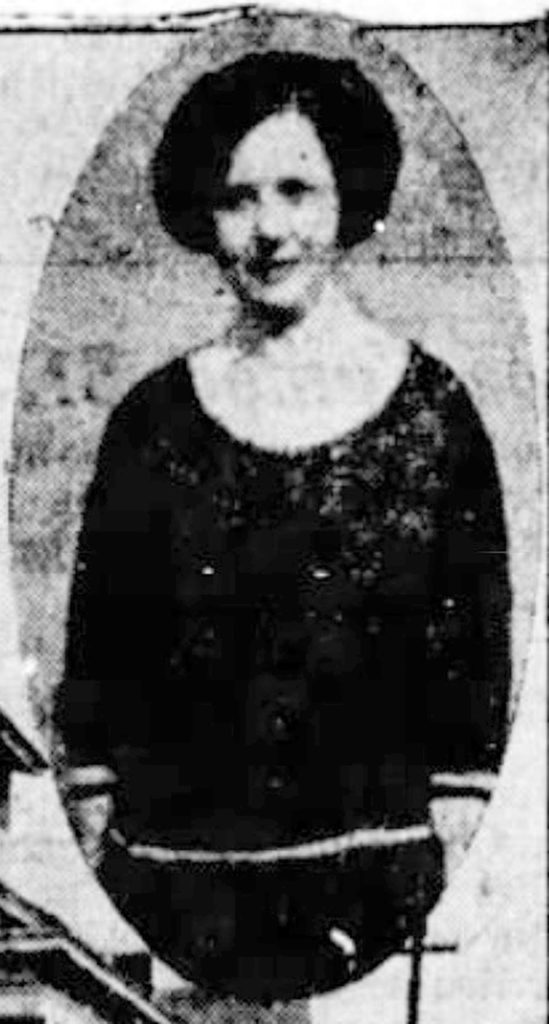
Police were summoned to the St. Paul home of James “Jimmy” Barrett, a St. Paul automobile loan financier, shortly before noon on Wednesday, August 10th when neighbors reported a light had burned all night in the house and sounds of a fight were heard Tuesday night. When police arrived they found the doors unlocked and the feeble sounds of a barking dog alerted them to an upstairs bedroom.
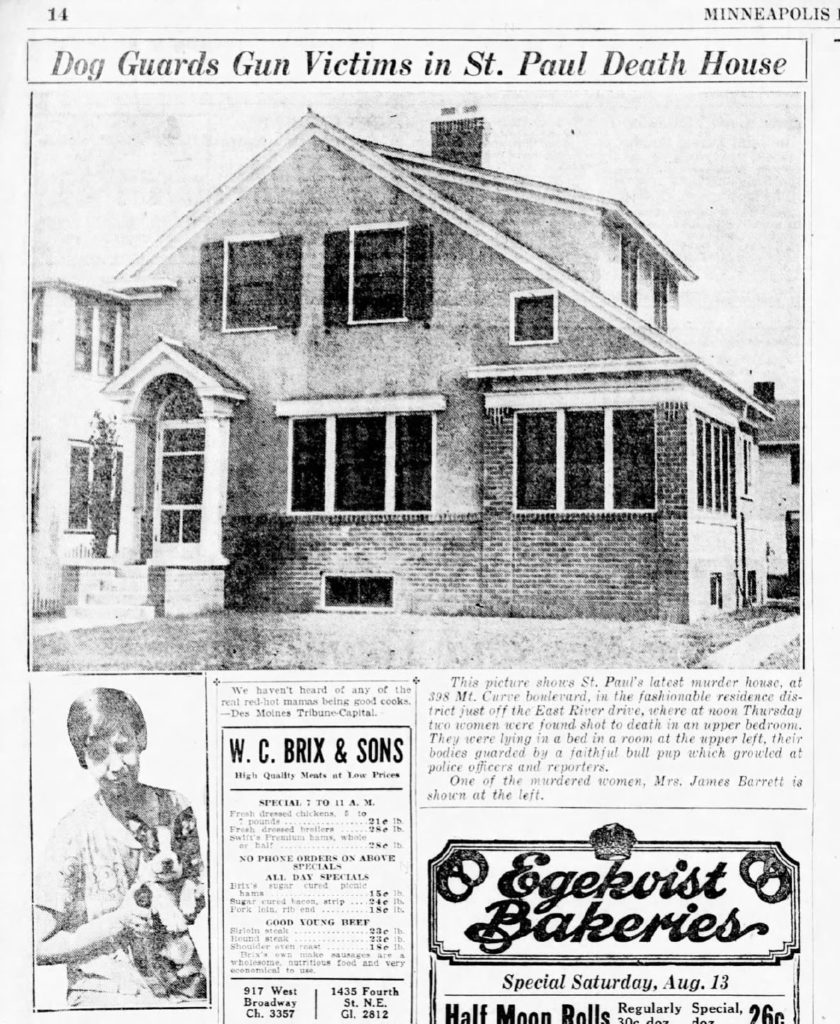
Here they found two women slain in bed with a small bull dog laying between them. Both were shot in the head at close range. The women were identified as Ruth Jennings Barrett, wife of James Barrett and her sister, Lillian Jennings Kooser, wife of Jack Kooser.
Lillian had been living in an apartment on Hennepin Avenue for several months, but that night was staying with her sister. There was no evidence of a robbery and no murder weapon was found. Immediately a search began for both husbands.
That evening police found Barrett’s new Cadillac overturned and partially burned on an isolated Ramsey County road. An empty gasoline can was found concealed in the bushes nearby, but no body was found.
Bootleggers in Panic
Panic seized the bootleg underworld, and those who feared that they may be next to be shot down in cold blood were cooperating with police. Barrett, his friends told police, feared an attack on his life and was preparing to leave the city about a week prior to the murder of his wife and sister-in-law and had not been seen for days. Detectives revealed that sources had established the fact that Barrett lived in constant fear that he would be murdered. He had, in fact, been shot at several times in the past year.
It was late Friday afternoon when Jack Kooser walked into the St. Paul police station and identified himself. After several hours of questioning, the police released him. Kooser explained he was on a fishing trip in Detroit Lakes when he read of the slaying of his wife and her sister. A storm had made the road from the fishing camp to the highway impassable, accounting for his delay in reaching St. Paul.
Kooser shed little light on the crime. He told them he married Lillian Jennings in 1923 and they separated in 1924. Since then, he had seen her only occasionally, the last time was July 25th.
After several hours of questioning, he was released subject to further questioning.
James “Jimmy” Barrett was one of several aliases used by William “Bill” O’Brien, who had grown up in Mankato. The investigation found that Barrett had an argument with his wife recently, and soon after presented her with expensive gifts, including a piano and an automobile.
Bodies of Two Murdered in St. Paul Arrive at Chatfield for Burial
Underworld Dens Being Watched
While the underworld of the Twin cities today was seeking to rid itself of a killer—a killer of women—preparations were being made in the old-fashioned home of Mr. and Mrs. Jennings in Chatfield for the burial of their only children.
Winona Daily News 8.13.1927
“Love of excitement and big town thrills” are the reasons given by the grief-stricken mother and father for the murder of their daughters. Both girls married young. Lillian married Jack Kooser and they lived in North Mankato. Ruth met William O’Brien (alias James Barrett) while living with her sister and husband. “If they had never gone to the big city, all this would never have happened,” Mr. Jennings declared.
A bad end
On Sunday, August 14th a body, believed to be that of James Barrett, was found by a 14-year-old boy in a Ramsey County roadside ditch. The coat was pulled over the head, the body was dragged from the roadside and hurled into the weeds against a wire fence. The body bore several bullet wounds, but the exact cause of death was difficult to establish due to the fact the body had laid in the hot sun for several days.
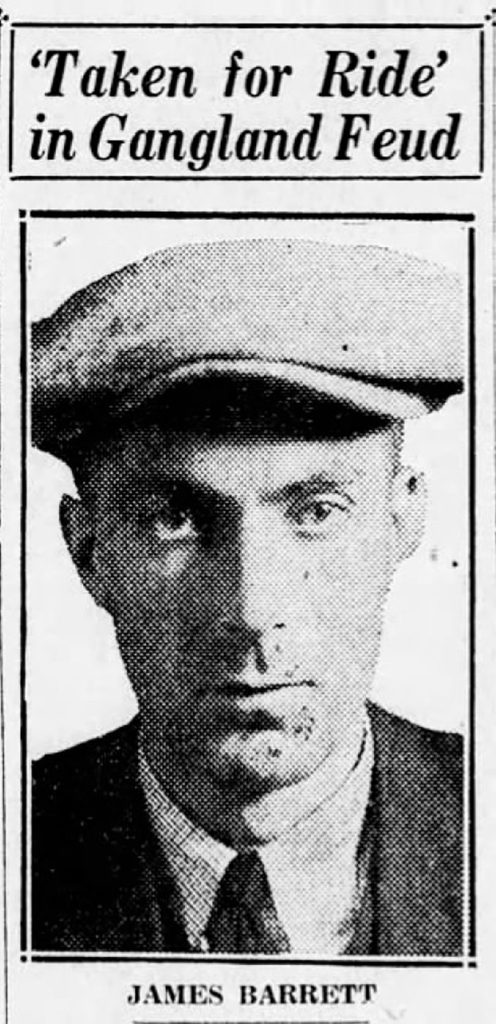
An almost unrecognizable large tattoo was on the right arm, but Barrett’s father, John F. O’Brien from North Mankato was able to identify the body. “I knew from the first he had been killed,” said O’Brien. “I was certain he had no part in the murder of his wife and sister-in-law, Lillian Kooser. He may have gone the wayward path but I did the best I could with him. He was motherless at six years of age.”
Police believed Barrett was slain early Tuesday night before the murder of his wife and sister-in-law. A farmer reported seeing three suspicious men beside a car on the roadside Tuesday night and he stopped thinking they needed help. One of the men lay on the ground, but another walked up to him with a revolver and ordered him to move on, which he did.
The investigation into the triple murders continued. It was late in September when Harry Mason, alias Art “Wicky” Hanson was captured in a police raid on the Ledo Inn in Chicago. He was arrested in connection with a gas station robbery, but police found a fingerprint record showing he was wanted for the Barrett murder in St. Paul. He was brought back to St. Paul under heavy guard to face murder charges.
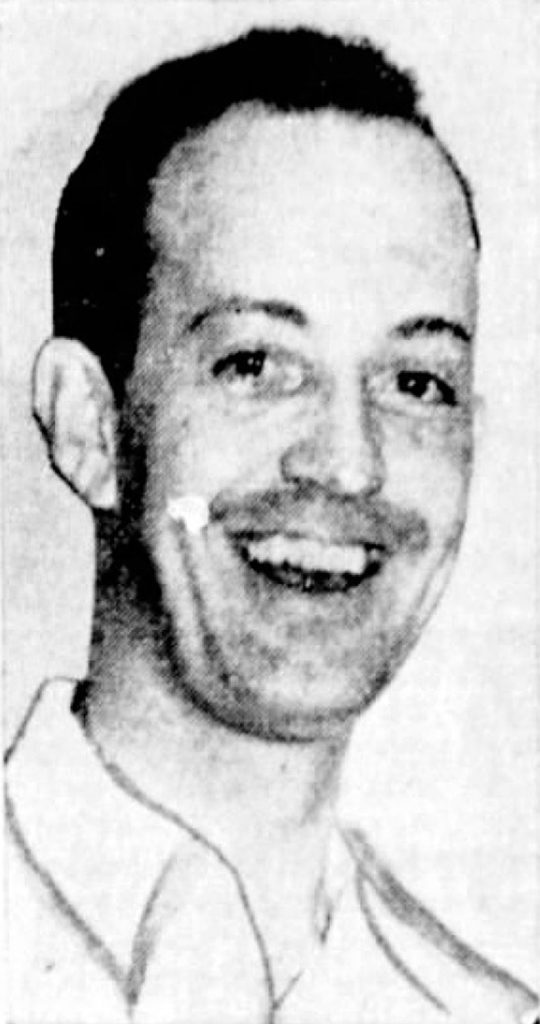
Hanson told police Barrett was a shrewd financier by day, a maniacal gunman at night, and was responsible for a series of murders in the St. Paul underworld including the slaying of two policeman during the past year.
Hanson claimed he shot Barrett in self-defense after he admitted to him that he killed his wife Ruth and her sister, Lillian Kooser. He claimed Barrett murdered his wife because she threatened to “ruin” him because his affection for her had waned. He killed Lillian because she happened to be in the same room with her sister.
At about 2 am on the night of the murders, Hanson said he remained in the car outside the house, while Barrett went inside. In a few minutes he heard shots, Barrett returned to the car and they drove out of town. Barrett told Hanson that he had “bumped the women off,” and when Hanson said: “You don’t mean you killed your wife! Why, you’re crazy,” Barrett threatened his life. Barrett told Hanson that “he knew too much” and when he reached for his gun, Hanson shot him. “Barrett fired the first bullet, but my aim was better.” Hanson confessed.
Hanson went on trial for the murder of Jimmy Barrett on November 2, 1927. He plead self-defense and after a three-hour deliberation the jury acquitted him.
On December 6, Hanson was in Ramsey County district court, charged with the robbery of the Superior Refining Company oil filling station in St. Paul on May 5, 1927. He pleaded guilty and was sentenced to Stillwater prison to serve an indeterminate term of five to forty years.
Hanson began serving his term in Stillwater prison as three indictments against him were pending; two for the murders of Ruth Barrett and Lillian Kooser and one for arson for the burning of Barrett’s car.
The day after Hanson began his prison sentence, the Ramsey County Coroner and County Attorney arrived in Sleepy Eye, MN with orders to exhume O’Brien’s (alias Barrett) body which had been buried next to his mother in St. Mary’s Cemetery. A second post-mortum was held in an effort to locate the bullet from which Barrett died, to determine whether or not the bullet matched those found in the bodies of the Jennings sisters who were murdered in August.
Even though Hanson accused James Barrett of the murders, it was not accepted as true and the investigation continued…
Watch for part two of this story on MankatoLIFE!

